Posted by:
Shane_OK
at Tue Nov 13 01:19:27 2007 [ Report Abuse ] [ Email Message ] [ Show All Posts by Shane_OK ]
Last May, I spent three exceptionally relaxing weeks in Japan. It wasn’t a herping vacation, but I spent quite a bit of time in the field. I hope most of you have a high speed internet connection……
This report will deal with the endemic “ratsnakes.” There are three ratsnakes that occur on the main islands of Japan. They are quite different animals, from habits to morphology. As far as I know, considering current taxonomy, only one of them, the Japanese Forest Ratsnake (Euprepriophis conspicillatus), has been split from the great lump of Elaphe.
The four main islands of Japan:
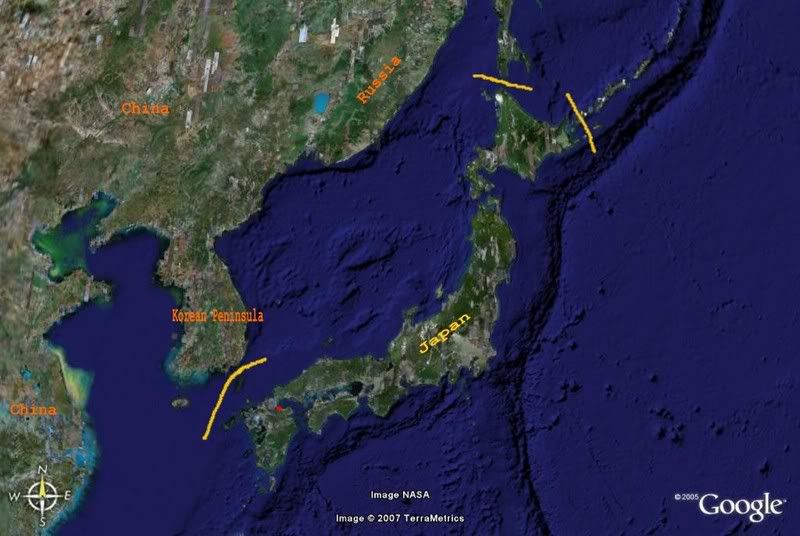
I herped the area of northern Kyushu that is marked with a red dot.
Here are some typical habitat scenes to give you a feel for the area. This first scene was taken from the mountains, looking out toward the ocean:

A closer view:

The flatlands are predominately used for agriculture, mainly wheat and rice in the area that I herped. In that scene, there is a moderate sized coastal city. Notice the road in that picture. It leads from the flatlands, and then follows a stream valley to higher elevations. As the valley narrows, so does the useable land for agriculture:

The upper sections of the valleys are where I preferred to search.
The most easily encountered of the three species is the Japanese Four-lined Ratsnake Elaphe quadrivirgata. I took many pictures of quadrivirgata, in various situations. There are two main variants: striped and melanistic, with a lot of variation among those. They are very racer-like snakes: diurnal, fast moving, nervous, and generalist predators.
The first quad that I saw on the trip was basking on a rock wall, so I guess it will be a good one to start with:


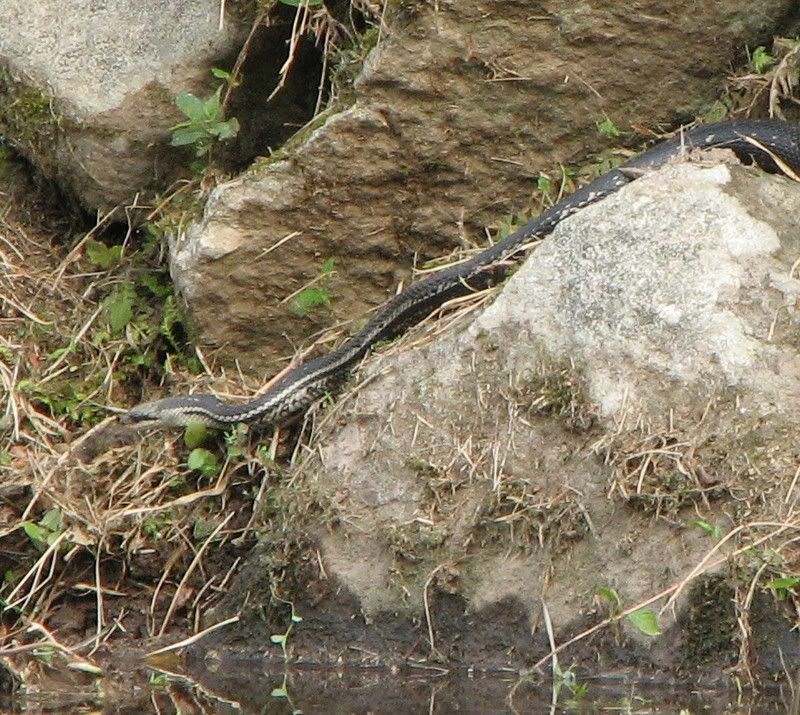
I like that variation. Unfortunately a cropped zoom was the best I could do, because I didn’t see any others quite like it on the trip.
This is a common scene while walking the rice paddies:


More, and more, and more…habitat and snakes, with a few comments…..most of these pictures were taken in situ, and a few posed:



They normally try to escape via terrestrial methods, but some will flee into the water:

All of the snakes that I noticed in the paddies seemed to be on the move, not in forage mode:

Don’t look at this pic too long, or you’ll get motion sickness:


They certainly like to forage along the edges:


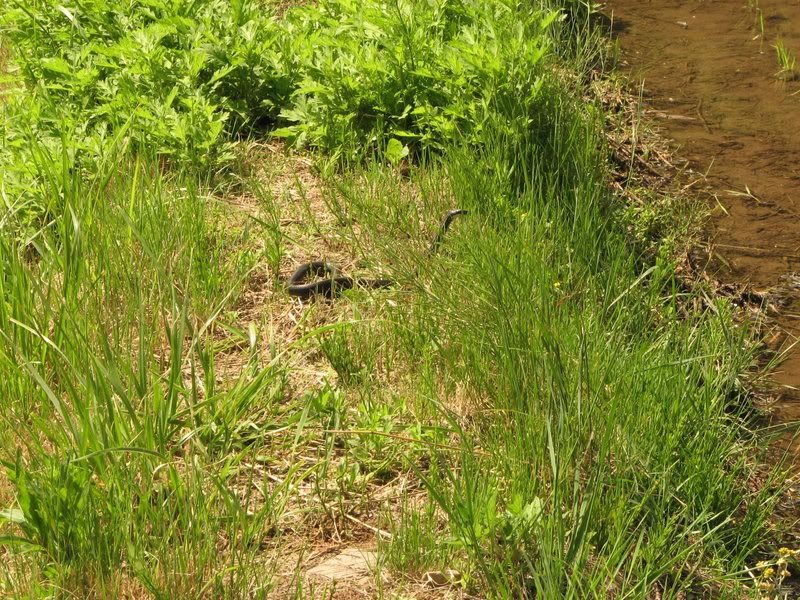
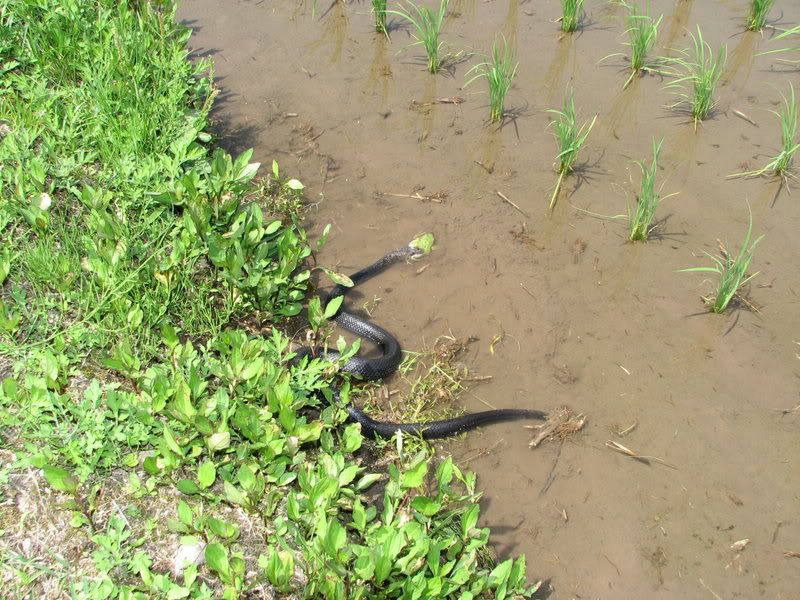



Found this one in a stream bed:

You see them in the forested areas, even the monoculture cedar plantations (snake is just to the right of the tree, in the trunk shadow):

I sat down and watched that particular snake for about 10 minutes, and it nosed around in the litter at the base of that tree the entire time, sometimes disappearing under the branches, and me thinking it was gone, only to reappear again:

What’s going on here?:


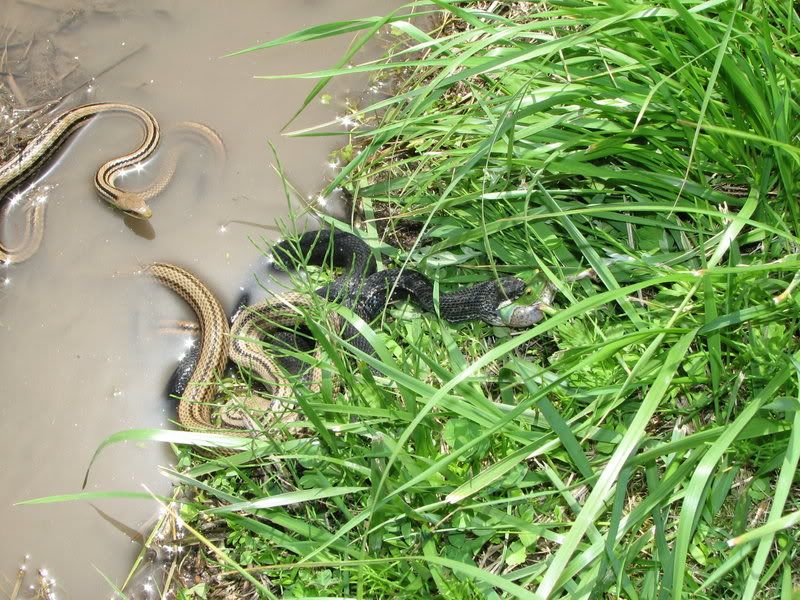

This was a big one:

The melanistic snakes leave the egg that way:

The striped snakes are born with stripes and transverse bars. This photo was taken in 2005, and the snake was likely in its second spring at that time, but it is the only photo I have of a smallish striped quad:
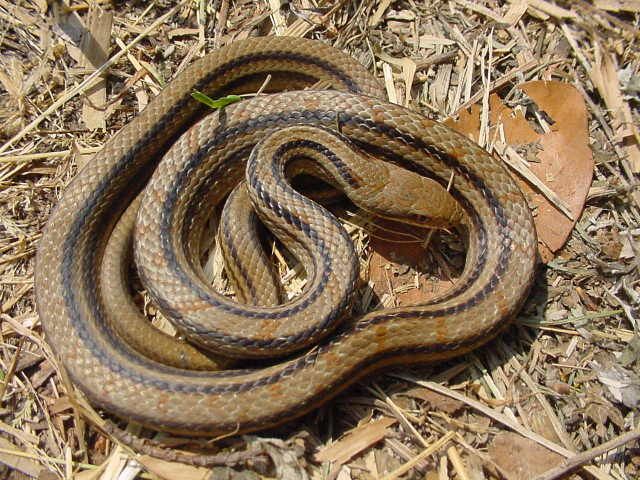

OK, you’re probably sick of looking at quad pics by now.
We’ll move on to the Japanese Ratsnake, Elaphe climacophora.
I have seen fewer climacs than any of the other species. They are not generally known as a hard-to-find species, however. I never focused on finding them, specifically, so that is probably the reason I haven’t found more.
In 2005, the only climac I was able to find was a DOR juvenile, and it is the only pic I have of a juvenile:
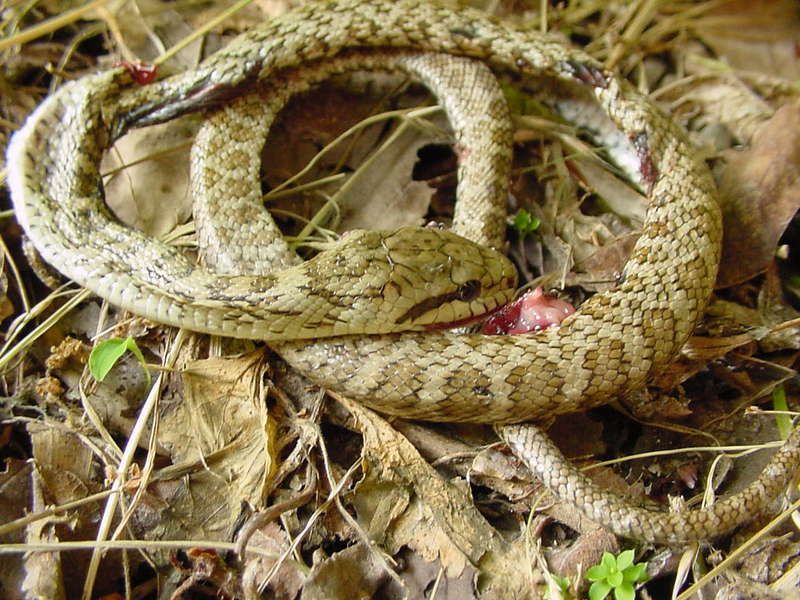
This year, I had more success, as I saw two in the field, three on the road (all alive), and one shed skin.
The first climac was found making its way onto the road, in an upper-valley area:

This one was found crossing a road in the mountains:

I thought this was a very nice looking climac, from low elevation:

Beautiful green hue.
This one was found on the ground. I tried to slip my camera out to get a in situ pic, while it was still kinked, but it bolted shortly before I was able to get the camera ready. I grabbed it, and put it on a nearly vertical slope:

Good climber; both quick and deliberate in that situation. In that photo, it looks like the snake was escaping into a crevice, but that wasn’t the case. It did however elude further photos by finding one smallish, wedged rock to hide behind. It took me all of three seconds to decide an extraction for photos might get me killed……fragile geology there. I returned a short time later to see if the snake was still there, but it had moved on.
The other climac that I saw was crossing a mountain road, but upon approach, it quickly made its way off of the road, and into some thick cover. I tried to find it, but no luck.
Moving on to the last species, the Japanese Forest Ratsnake, Euprepriophis conspicillatus. Conspics have a reputation of being hard to find (alive anyway), but I have not found that to be the case.
On this trip, the first conspic was found under a piece of tin:

It was thermoregulating, but much of its body was hidden in a rodent tunnel. It quickly retreated back into the tunnel, where a bit of digging was necessary for safe extraction:

The snake:

In this low elevation habitat, I found three conspics:
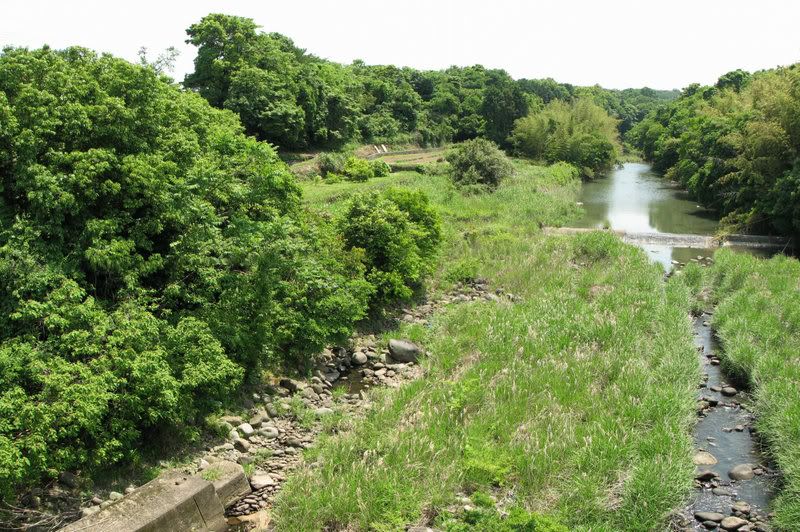
The first was found at the hottest part of the day, crossing a trail that went through the bamboo thicket on the left side of the river.
Number two and three were found on the same evening, but different day than number 1. They were both found in or entering this irrigation channel:

I didn’t have my camera on me for the first sighting that evening, but I tried to recreate the scene……kinked snake, noticed at a distance, crawling right in the center:

Not a bad depiction of the in situ moment.
I did have my camera on me for the second snake, and took this series, in situ……..horrible photography, which is normal for me anyway, but you get a feel for the encounter:

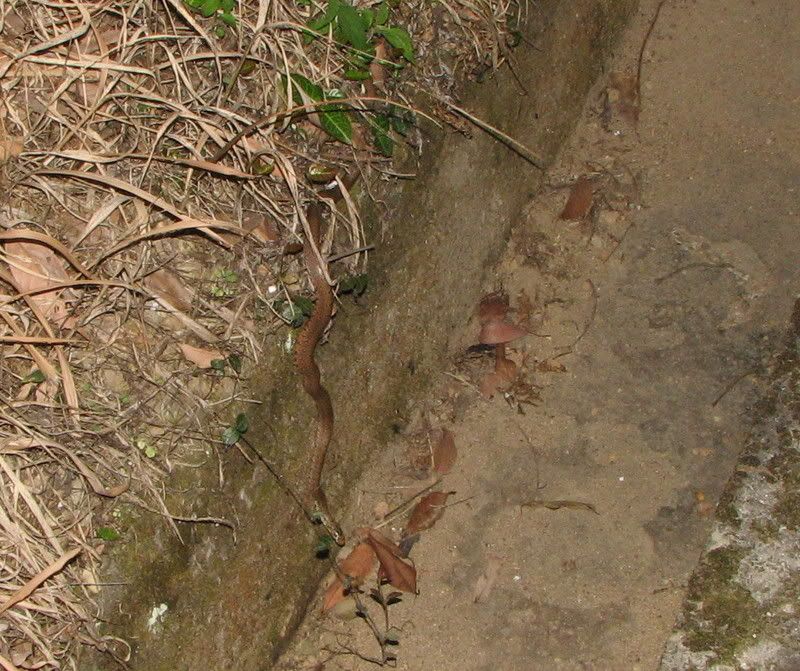

(more natural lighting on that one, though my eyes are better than what I can do with the camera)
After a pause with the photography, it continued along into the “ditch,” where I super-flashed it:

And, shortly after, with both in hand; good depiction of the available light at the moment:
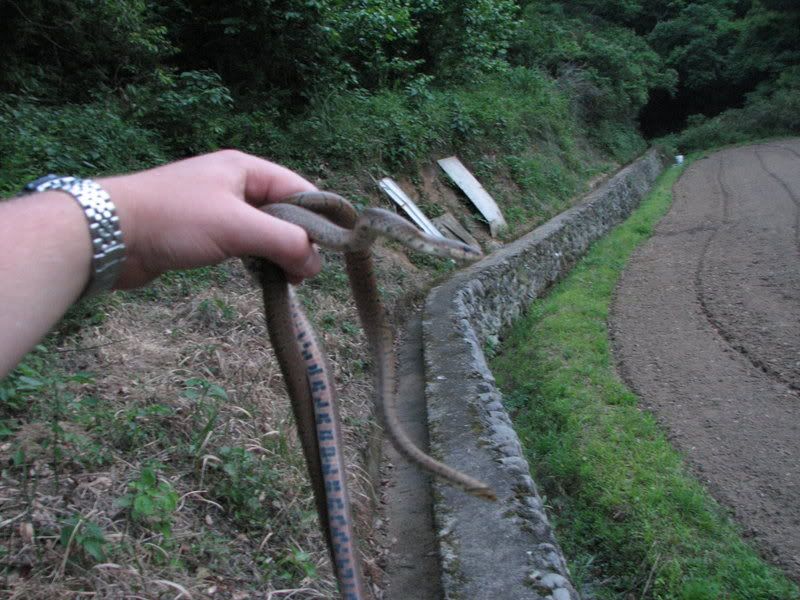
Great herping memory!
I haven’t taken a pic of the snake I found during the afternoon hours, but here are the two from that evening:

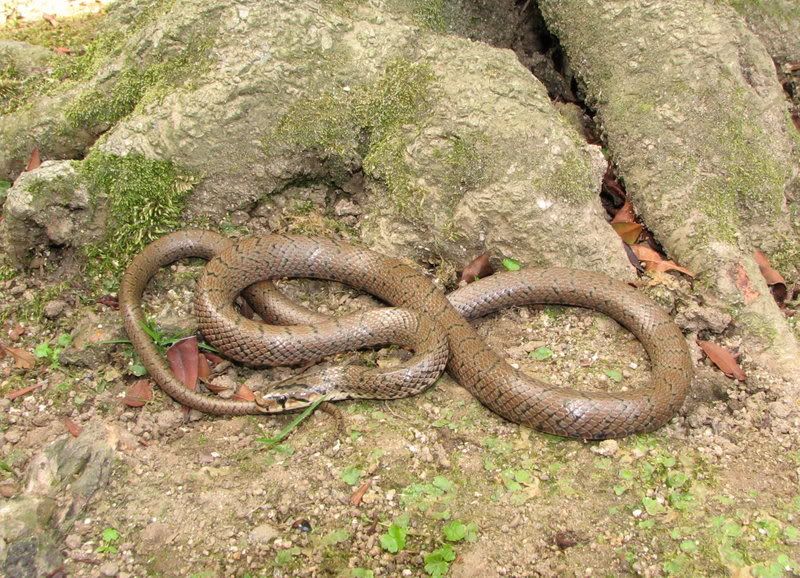
The last living conspic was from an area I had seen two others in 2005. Pretty little juvie:

Here is a map I made to show the locations of most of the conspics I have found:

I apologize for the brief commentary. I am in the process of making a dedicated webpage regarding the main island ratsnakes. It will take me a while, but I’ll be slowly piecing it together.
Shane
-----
Lifelist
[ Reply To This Message ] [ Subscribe to this Thread ] [ Hide Replies ]
 A few from Japan - Shane_OK, Tue Nov 13 01:19:27 2007 A few from Japan - Shane_OK, Tue Nov 13 01:19:27 2007 
|





